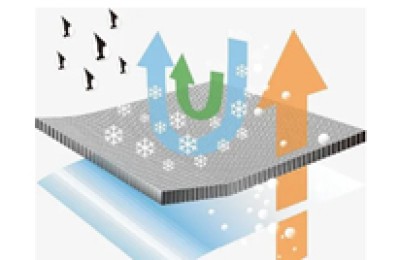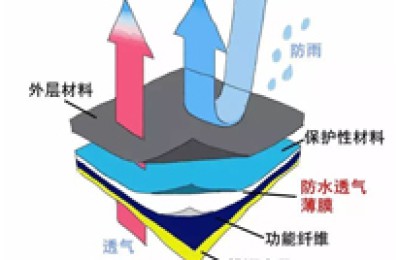With policy support and futures market assistance, Xinjiang’s cotton industry is developing rapidly
Abstract: Policies support the futures market to help. Rising production costs and declining cotton income have caused the cotton planting area in the mainland to continue to decline. The shortage of raw materials and the lack of supporting policies have made it difficult for mainland cotton downstream enterprises to survive, and industrial transfer has become the first choice. Due to the obvious effects of the implementation of the target price policy, Xinjiang’s cotton yield and total output have increased simultaneously, and the continuous introduction of preferential industrial policies has attracted many mainland cotton downstream industry enterprises to enter Xinjiang. In addition, cotton futures transfer and delivery warehouses and plans
Policy support and futures market assistance
Rising production costs and declining cotton income have caused the mainland’s cotton planting area to continue to decline. The shortage of raw materials and the lack of supportive policies have made it difficult for mainland cotton downstream enterprises to survive, and industrial transfer has become the first choice. Due to the obvious effects of the implementation of the target price policy, Xinjiang’s cotton yield and total output have increased simultaneously, and the continuous introduction of preferential industrial policies has attracted many mainland cotton downstream industry enterprises to enter Xinjiang. In addition, cotton futures transfer and delivery warehouses and pricing points have been set up in Xinjiang, and the progress of the futures market in serving Xinjiang’s cotton industry is in progress. In the future, Xinjiang will become the center of my country’s cotton industry, and a new cotton industry pattern is being built.
The sunset of the mainland’s cotton industry
Near the end of the year, I drove through Jingchu and Qilu. Looking around, I saw either green wheat fields or pale yellow rice fields. In previous years, it was common to see a few cotton lings hanging in the cold wind. The large swaying cotton trees are hard to find. Fellow grain trader Wang Zhongshi from Heze City, Shandong Province told the Futures Daily reporter that the cotton planting area in the mainland is getting smaller and smaller, and large cotton fields are no longer easy to find. At the same time, many cotton-related companies in the downstream have either stopped production or closed down or moved abroad. The entire cotton industry is shrinking.
“The land resources in the Mainland are limited. With the advancement of urbanization, the cultivated land available for growing cotton in the Mainland has been declining year by year. At the same time, natural resources such as agricultural water in the Mainland are also becoming increasingly scarce, such as Agricultural water use in Hebei Province is now almost entirely met by pumping groundwater. More importantly, there is currently a shortage of labor resources in the mainland market, and the labor cost of growing cotton is increasing rapidly.” Zhao Zide, a cotton organizer in Hengshui City, Hebei Province, told reporters that cotton is grown in the mainland , firstly, lack of resources, secondly, large investment and low returns. The probability that mainland cotton planting area will remain stable and increase in the future is very low. In the face of insufficient raw materials, the mainland’s cotton downstream industry has no choice but to relocate or transform if it wants to survive.
In previous winters, when driving through the main cotton-producing areas in China such as Hubei, Hebei, Shandong, and Henan, one could often see reddish-brown cotton trees covering the ground and the courtyards of farmers in the producing areas. It was filled with cotton firewood and cotton husks. These scenes are rarely seen today.
According to Zhao Zide, it is not cost-effective for farmers in the mainland to grow cotton now. Although the purchase price of seed cotton in the mainland is higher this year and the income from cotton planting has increased, the investment has also increased a lot. To put it into perspective, growing cotton is not as good as growing crops such as wheat, rapeseed or vegetables.
During interviews with mainland cotton-producing areas, reporters found that it is increasingly difficult to maintain stable cotton planting area and output. Due to the scarcity of land and the large number of people, cotton cultivation by farmers in the mainland is characterized by small-scale and spot-based operations. It is impossible to implement mechanized operations of cotton planting, pesticide spraying, fertilizer application, watering, and picking. Cotton production in the mainland is still dominated by manual labor. It is time-consuming, labor-intensive and labor-intensive, which makes it difficult for cotton production to compete with the highly subsidized and highly mechanized grain production. Farmers in inland production areas have changed a large number of cotton fields into wheat fields, rape fields, and spring corn fields (1502,-9.00, -0.60%) Tian and others are inevitable.
Zhou Dalong, a cotton researcher at Luzheng Futures, told reporters that from the analysis of the actual planting area and output of cotton in mainland production areas this year, the decline in cotton area and total output in the mainland is very obvious.
On December 20, national cotton production data released by the National Bureau of Statistics showed that the national cotton production this year was 5.343 million tons, a decrease of 260,000 tons or 4.6% compared with 2015. Overall, the decrease in planting area is the main reason for the decrease in cotton production in my country this year. Following the decrease in cotton planting area in 2014 and 2015, it has continued to decrease this year. This year, the national cotton planting area is 50.642 million acres, a decrease of 6.308 million acres compared with 2015, a decrease of 11.1%. In terms of regions, the cotton planting area in Xinjiang decreased by 1.488 million acres compared with 2015, a decrease of 5.2%; the cotton planting area in other provinces decreased by 4Many large cotton growers in the cotton area make plans based on domestic cotton futures prices before planting and selling seed cotton, thus avoiding blind expansion of planting and low seed cotton prices. For some large fabric companies, increasing cotton and product inventories faces the risk of falling prices, while maintaining low cotton and product inventories faces the risk of rising prices and the possibility of not being able to purchase raw materials in the future. At this time, these companies only need to carry out basic operations. The operation of spread trading or OTC options trading may better solve the problem.
Du Ying told reporters that judging from the current lint pricing model in Xinjiang, futures pricing has gradually matured. However, from the perspective of cotton-related business operations, there are still many problems that need to be solved. Since cotton is produced seasonally and sold annually, many ginners face inventory risks. At the same time, cotton, as a commodity with high economic value, takes up a large amount of funds during the circulation process. Cotton-related enterprises often encounter the problem of shortage of funds in their operations.
According to the reporter’s understanding, with the high degree of integration of the cotton market, enterprises in my country’s cotton industry chain are facing increasingly fierce market competition. As cotton price fluctuations intensify, Under such circumstances, the healthy progress of Xinjiang’s cotton industry not only requires strengthening policy support, product innovation, and governance innovation, but also strengthening market risk management.
In recent years, in order to assist cotton-related enterprises in Xinjiang to solve problems such as high operating risks, tight funds, and lack of futures talents, the Zhengzhou Commodity Exchange and other relevant futures institutions have focused on futures business in Xinjiang. training, and launched a number of innovative businesses in the futures market service industry, which is conducive to the stable development of Xinjiang’s cotton industry.
At present, Zhengzhou Commercial Exchange has innovatively set up a cotton delivery transit warehouse in Xinjiang. Cotton is produced in Xinjiang, inspected in Xinjiang, and registered in Xinjiang. Cotton transit warehouse receipt delivery unit and inspection method , inspection institutions, delivery standards, EFP method, independent matching delivery method, warehouse receipts as margin, bank pledge and other functions are the same as standard warehouse receipts. If the transit warehouse receipt is to be converted into a standard warehouse receipt, the only remaining problem is transportation from Xinjiang to the mainland. The transportation time will be flexibly resolved by the warehouse receipt holder and the delivery transfer warehouse according to the tightness of railway transportation.
In addition, in order to help farmers in poverty-stricken areas in Xinjiang get rid of poverty as soon as possible and reduce the risks of farmers planting cotton, Zhengzhou Commodity Exchange and a number of futures institutions have also launched “Insurance+” in some areas of Xinjiang Futures” business. In early November this year, Xinjiang’s first “insurance + futures” innovation pilot signing ceremony was held in Shache County, Kashgar Prefecture, Xinjiang. PICC Property and Casualty Insurance Company of China and Nanhua Capital, a wholly-owned subsidiary of Nanhua Futures, signed a cotton “insurance + futures” innovation pilot cooperation agreement. At the same time, cotton price insurance policies were issued to 25 cotton farmers.
The reporter learned from the Zhengzhou Commercial Exchange that in the future, the Zhengzhou Commercial Exchange will also increase futures business training for Xinjiang cotton-related enterprises in response to the trend of China’s cotton industry concentrating in Xinjiang, and actively promote Set up cotton futures pricing points and delivery warehouses in Xinjiang.
AAAGFREGRTTHR
Disclaimer:
Disclaimer: Some of the texts, pictures, audios, and videos of some articles published on this site are from the Internet and do not represent the views of this site. The copyrights belong to the original authors. If you find that the information reproduced on this website infringes upon your rights and interests, please contact us and we will change or delete it as soon as possible.
AA







